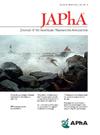Pharmacists' perspectives on providing an educational intervention to address E-cigarette use and vaping among adolescents and their parents
IF 2.5
4区 医学
Q3 PHARMACOLOGY & PHARMACY
Journal of the American Pharmacists Association
Pub Date : 2025-03-24
DOI:10.1016/j.japh.2025.102392
引用次数: 0
Abstract
Background
The use of newer forms of nicotine, such as e-cigarettes, has become popular among youth, creating a growing concern about its health impact on adolescents. As the adolescent vaping epidemic persists, it is necessary to engage all public-facing health care professionals in prevention and reduction efforts against e-cigarette use. With pharmacists being the most accessible health care professional, they are well-suited to expand their tobacco services to include vaping.
Objective
The objectives of this study are to examine pharmacists' opinions on the potential role they may have in addressing adolescent vaping and to determine pharmacists' view on a proposed educational tool (Pharmacist-Led E-cigarette and Vaping Educational Resource [Ph-EVER]) for adolescents and parents to learn more about vaping and e-cigarette use.
Methods
Licensed and practicing pharmacists in Wisconsin were recruited via pharmacy organizations' email listservs to take part in a semi-structured interview. The interview questions covered knowledge on adolescent vaping, the role of pharmacists in addressing adolescent vaping, interactions with adolescents in their practice, and feedback on the Ph-EVER. Two study team members independently coded the interviews to generate prevalent themes and subthemes.
Results
In this study, 30 pharmacist participants were interviewed. From their interviews, themes that emerged included how pharmacists interact with teens, what they already know about e-cigarettes, the potential roles pharmacists may have on adolescent vaping, and feedback on the Ph-EVER.
Conclusion
Pharmacists can be key professionals in reducing adolescent vaping; however, they lack knowledge on the topic of e-cigarettes, indicating the need for continuing education. Many pharmacists noted that they rarely see adolescents in their practice setting, making adolescents a difficult population to reach. Pharmacists were open to the idea of implementing the Ph-EVER within their pharmacy, stating it achieved its intended purpose. Recommendations were made to expand this resource to social media to target the adolescent population.
药师在青少年及其父母中提供电子烟使用和电子烟教育干预的观点
背景:使用电子烟等较新形式的尼古丁已在青少年中流行起来,人们越来越关注其对青少年健康的影响。随着青少年吸食电子烟现象的持续流行,有必要让所有面向公众的医疗保健专业人员参与到预防和减少使用电子烟的工作中来。药剂师是最容易接触到的医疗保健专业人员,他们非常适合将烟草服务扩展到吸食电子烟:本研究的目的是考察药剂师对他们在解决青少年吸食电子烟问题上可能扮演的角色的看法,并确定药剂师对为青少年和家长提供的教育工具(Ph-EVER)的看法,以了解更多有关吸食电子烟和使用电子烟的信息:通过药学组织的电子邮件列表服务征集威斯康星州的执业药剂师参加半结构式访谈。访谈问题涉及对青少年吸食电子烟的了解、药剂师在解决青少年吸食电子烟问题中的作用、他们在实践中与青少年的互动以及对 Ph-EVER 的反馈。两名研究小组成员对访谈进行了独立编码,以产生普遍的主题和次主题:本研究共采访了 30 位药剂师。从他们的访谈中得出的主题包括药剂师如何与青少年互动、他们对电子烟已有的了解、药剂师在青少年吸食电子烟方面可能扮演的角色以及对 Ph-EVER 的反馈意见:结论:药剂师可以成为减少青少年吸食电子烟的关键专业人员;然而,他们缺乏有关电子烟的知识,这表明他们需要接受继续教育。许多药剂师指出,他们在执业过程中很少见到青少年,因此很难接触到青少年。药剂师对在其药房内实施 Ph-EVER 的想法持开放态度,并表示它达到了预期目的。建议将该资源扩展到社交媒体,以青少年为目标人群。
本文章由计算机程序翻译,如有差异,请以英文原文为准。
求助全文
约1分钟内获得全文
求助全文
来源期刊
CiteScore
3.30
自引率
14.30%
发文量
336
审稿时长
46 days
期刊介绍:
The Journal of the American Pharmacists Association is the official peer-reviewed journal of the American Pharmacists Association (APhA), providing information on pharmaceutical care, drug therapy, diseases and other health issues, trends in pharmacy practice and therapeutics, informed opinion, and original research. JAPhA publishes original research, reviews, experiences, and opinion articles that link science to contemporary pharmacy practice to improve patient care.

 求助内容:
求助内容: 应助结果提醒方式:
应助结果提醒方式:


